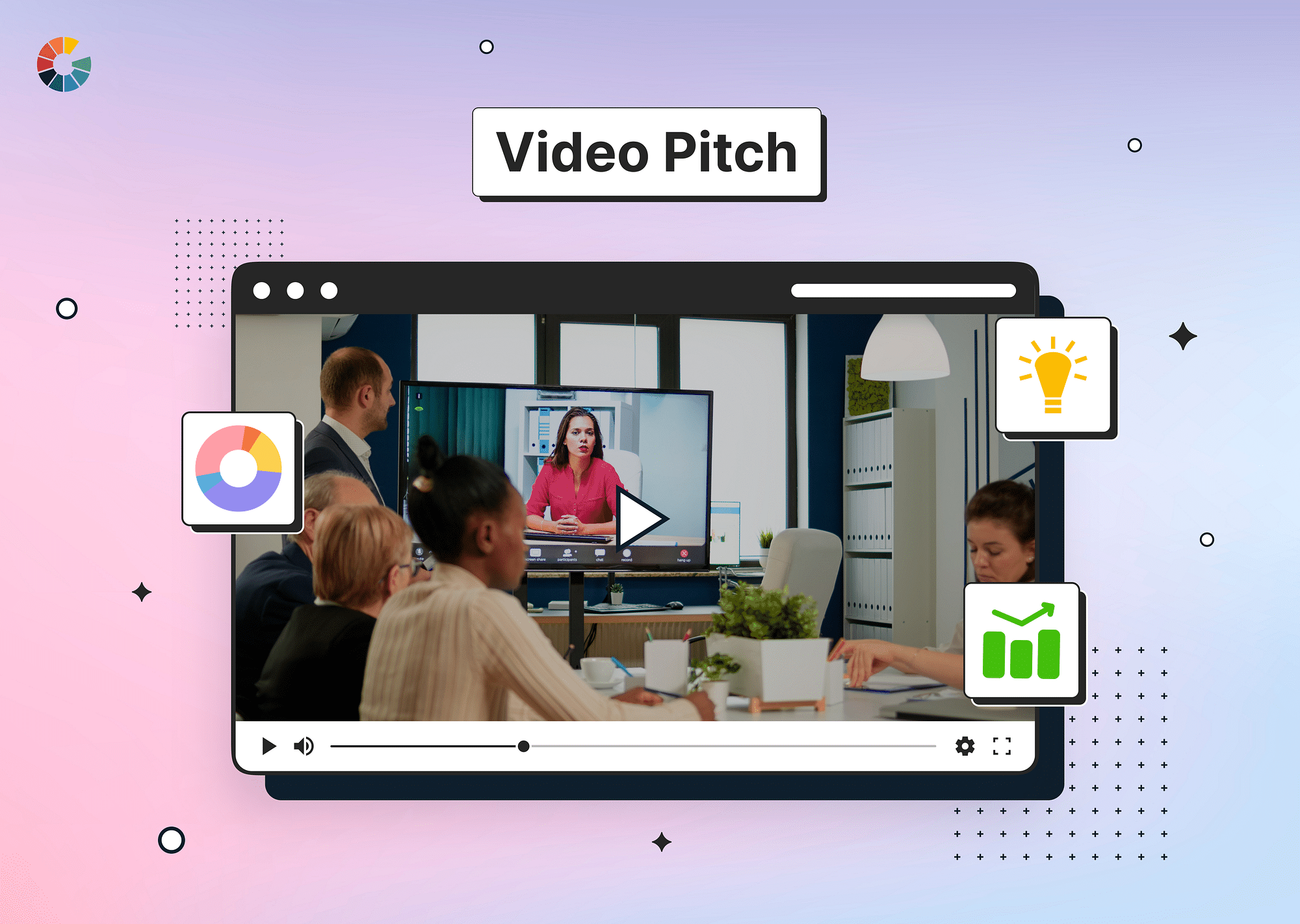What is a Video Sharing Platform?
A video-sharing platform is essentially a website or app that allows users to upload, share, and sometimes edit videos. As the internet evolves, the way we consume content has dramatically shifted from reading texts to watching videos. The platform you choose plays a pivotal role in achieving your goals. Some benefits of selecting the right platform include:
- Tailored Audience Reach: Reach your specific target audience more efficiently.
- Optimal Monetization Options: Different platforms offer various ways to earn from your content.
- Enhanced Engagement: Some platforms foster better community engagement than others.
Schedule a Demo with Our Video Expert!
Discover how Gumlet can help you build a cutting-edge video streaming infrastructure.
Our Top Picks: Video-Sharing Platforms
In the vast ocean of the internet, there's a plethora of video-sharing platforms, each tailored to cater to specific needs. From individual content creators and budding influencers to businesses and gamers, there's a space for everyone. Let's explore these platforms, diving into their strengths and evaluating which might be the best fit for you.
For Individual Creators
Every individual has a story to tell, a skill to share, or a moment to capture. For personal creators, platforms that prioritize content discovery and creator-community engagement are pivotal. Here's our curated list:
YouTube
- The world's most renowned video platform, YouTube, offers an unparalleled reach and a diverse audience.
- Upload Limits: 15 minutes for unverified accounts, up to 12 hours for verified.
- Supported Video Formats: MP4, AVI, FLV, MOV, WMV, etc.
- Monetization Options: Ad revenue, channel memberships, super chat.
Vimeo
- Tailored for professionals, Vimeo champions high-quality content and provides tools for refined video hosting.
- Upload Limits: 500MB per week for free accounts; higher limits with paid plans.
- Supported Video Formats: MP4, MOV, WMV, etc.
- Monetization Options: On-demand videos, tip jar.
For Marketers and Businesses
The business world thrives on impactful presentations, product demos, and client testimonials. For enterprises, platforms that can facilitate B2B connections and offer analytical insights are invaluable:
LinkedIn:
- The professional's social network, LinkedIn, allows businesses to share video content that amplifies their corporate image and fosters B2B connections.
- Upload Limits: 10 minutes.
- Supported Video Formats: ASF, AVI, FLV, MPEG-1, etc.
- Monetization Options: Predominantly for lead generation.
Facebook:
- As one of the largest social media giants, Facebook offers businesses immense audience reach and dynamic video ad campaigns.
- Upload Limits: 240 minutes and 10 GB.
- Supported Video Formats: MP4, MOV.
- Monetization Options: Ad breaks, branded content.
Wistia:
- Ideal for businesses focusing on video marketing, Wistia offers top-notch video analytics and hosting services.
- Upload Limits: 3 videos for free accounts; unlimited with paid plans.
- Supported Video Formats: MP4, MOV, WMV, etc.
- Monetization Options: More about hosting and analytics.
For Live Streaming and Gaming Community
The gaming community and live streamers require platforms that support real-time interaction, low latency, and, often, the ability to monetize via donations or subscriptions.
Twitch:
- The go-to platform for gamers, Twitch provides a space for real-time gameplay, tutorials, and fan interactions.
- Upload Limits: Varies based on the streamer's status and partnership.
- Supported Video Formats: MP4.
- Monetization Options: Ads, subscriptions, bits.
YouTube Live:
- Branching from YouTube, YouTube Live caters to a variety of live-stream content, from webinars to gaming.
- Upload Limits: Depends on the channel's status.
- Supported Video Formats: MP4, MKV, FLV, MOV, etc.
- Monetization Options: Ad revenue, super chat.
For Influencers and Social Engagement/Short Videos
The era of short, engaging videos has arrived. For those who thrive in quick, impactful content and wish to foster social interactions, the following platforms reign supreme:
Instagram:
- A visual platform at its core, Instagram offers influencers a chance to engage with followers through stories, IGTV, and reels.
- Upload Limits: 60 seconds for feed videos; 15 seconds for stories.
- Supported Video Formats: MP4, MOV.
- Monetization Options: Sponsored content.
TikTok:
- The kingpin of short-form content, TikTok has revolutionized how influencers create and share content, with virality just a dance move away.
- Upload Limits: 60 seconds.
- Supported Video Formats: MP4, MOV.
- Monetization Options: In-app purchases, brand partnerships.
News, Media, and Entertainment
For those looking to broadcast news, share media, or provide entertainment, platforms that emphasize content discoverability and offer varied audience demographics are vital.
Dailymotion:
- Catering primarily to news and entertainment segments, Dailymotion offers a global platform for content dissemination.
- Upload Limits: 2 hours and 10 GB.
- Supported Video Formats: MP4, MOV.
- Monetization Options: Ad revenue.
Twitter:
- Evolving into a media-sharing platform after Musk's takeover, Twitter emphasizes visual content, making it a potent tool for news and media.
- Upload Limits: 2 minutes and 20 seconds.
- Supported Video Formats: MP4, MOV.
- Monetization Options: Sponsored content, Twitter Amplify.
TED:
- A hub for intellectuals and thinkers, TED is less about monetization and more about disseminating ideas worth sharing.
- Upload Limits: Specific to individual contributors.
- Supported Video Formats: Varies.
- Monetization Options: Not tailored for the general public's monetization.
Things to consider while choosing a video-sharing platform
Choosing the ideal video-sharing platform isn't just about where your audience resides or which platform is the trendiest at the moment. Let's dissect some of the crucial aspects to ensure your video content gets the optimal platform it truly deserves.
- Audience and Purpose: Before diving into any platform, it's pivotal to define your target audience. Are they professionals on LinkedIn or young enthusiasts on TikTok? Understanding your purpose – be it brand awareness, entertainment, or education – can guide you toward the right platform audience.
- Content-Type: Some platforms excel at short-form content, like TikTok, while others, like YouTube, are more versatile, catering to both short and long-form content. The nature and style of your videos should align with the platform's predominant content type.
- Monetization Opportunities: If earning from your content is a goal, platforms with transparent and multiple monetization options, such as ad revenue, memberships, or partnerships, should be prioritized. Creating content for these platforms can be a great way to earn passive income by building a loyal audience.
- Community Engagement: Platforms with active and engaged communities can offer content creators a higher degree of interaction, feedback, and growth. Assess if the platform promotes genuine interactions and offers tools to foster them.
- Privacy and Control: Does the platform offer adequate privacy settings? Can you control who views your content? These considerations, especially for sensitive or premium content, are paramount.
- Video Quality and Formats Supported: Depending on your production quality, platforms that support high-definition videos or specific video formats may be more suitable.
- Discoverability and SEO: Platforms with good search engine optimization (SEO) tools and features enhance your video's discoverability. Features like tagging, subtitles, and descriptions play a role here.
- Analytics and Insights: A clear view of how your content is performing can guide your next steps. Platforms offering in-depth analytics regarding viewer demographics, watch time, and engagement rates can be invaluable.
- Branding and Customization: For businesses and brands, platforms that allow custom branding, from watermarks to embedded players, can amplify brand visibility and consistency.
- Mobile-Friendly: In an age where most content is consumed on mobile, platforms optimized for mobile viewing and uploading are a must.
- Copyright and Licensing: To avoid disputes and maintain content integrity, platforms with clear copyright guidelines and support for licensing agreements should be chosen.
- Platform Stability and Reputation: A platform's longevity, user trust, and reputation in handling content and user data securely can influence a creator's decision to use it.
- Community Guidelines and Content Policies: Ensure the platform's content policies align with your content type. Platforms with restrictive policies may not be suitable for all types of content.
How to make your videos stand out on video-sharing sites?
With the digital realm overflowing with content, standing out isn't just an option; it's a necessity. Ensuring your video captures attention amidst the vast ocean of content is an art backed by strategy. Here's a guide to elevate your content and make sure it doesn't just blend into the background:
Video Optimization for SEO: Before your video reaches the audience, it has to appease the platform's algorithms. This means:
- Title and Description: Craft catchy titles and detailed descriptions infused with relevant keywords to improve searchability.
- Thumbnail: A compelling thumbnail can drastically improve click-through rates. Ensure it's relevant and visually appealing.
Engage with Analytics: Data is your compass. Regularly delve into:
- Viewer Demographics: Tailor content according to the age, location, and preferences of your primary viewers.
- Engagement Metrics: Identify what's working by monitoring likes, shares, and comments.
Interactive Elements: Transform passive viewers into active participants by:
- Polls and Quizzes: Especially on platforms like YouTube, these can boost engagement.
- Calls to Action: Encourage likes, shares, and subscriptions to foster community growth.
Branding: Consistency is key.
- Logo and Watermark: They should be visible, reinforcing brand recall without being obtrusive.
- Video Intro/Outro: A consistent start or end sequence helps in brand recognition and sets a professional tone.
Subtitles and Captions: Accessibility boosts reach. Subtitles:
- Cater to the hearing-impaired audience.
- Aid viewers watching in noisy environments or those who prefer watching videos on mute.
Diversify Content: While sticking to your niche is vital, occasional diversification can capture a broader audience. Experiment with:
- Trending Topics: Integrate current events or trends related to your content.
- Collaborations: Partner with other creators to blend audiences and offer fresh perspectives.
Engage with the Audience: Your community is your most significant asset. Engage by:
- Replying to Comments: Build relationships and show you value viewer opinions.
- Host Q&A Sessions: Let the audience get to know you, fostering a deeper connection.
High-Quality Production: While content is king, quality is its crown. Invest in:
- Good Lighting: Proper lighting can drastically improve video quality, even if shot on a phone.
- Clear Audio: Viewers might tolerate sub-par visuals but rarely compromise audio.
Continuous Learning: The digital world is ever-evolving. Keep updating your skills, be it in video editing, scriptwriting, or video SEO optimization.
Remember, the journey of content creation is iterative. The feedback loop – creating, analyzing, refining – is perpetual. With patience, persistence, and the above strategies, your videos are bound to stand tall among the crowd.
Conclusion
In a world dominated by visual content, choosing the right platform to share your videos can drastically influence your reach and success. Be sure to evaluate your objectives, audience, and the platform’s offerings before making a choice.
FAQs:
1. Are there privacy concerns when using video-sharing platforms?
Absolutely. With the growth of the digital age, privacy concerns have become more pronounced across various online platforms, and video-sharing sites are no exception. To mitigate these concerns, it's essential to read the platform's privacy policy, adjust your privacy settings accordingly, and stay informed about best practices in digital privacy.
2. What is the best way to share large video files?
Sharing large video files can be a challenge due to size restrictions on standard sharing methods like email. Some optimal ways of sharing voluminous files include cloud storage services, dedicated file transfer services, physical drives, and so on.
3. What are the best video-sharing apps like YouTube?
YouTube undeniably paved the way for video sharing, but several platforms have emerged, offering unique features and catering to diverse audiences. Some noteworthy contenders include Vimeo, Dailymotion, Twitch, TikTok, Instagram’s IGTV, etc.




